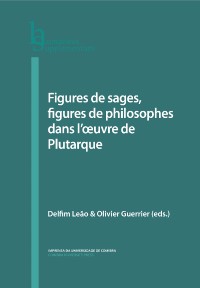Please use this identifier to cite or link to this item:
https://hdl.handle.net/10316.2/47371| DC Field | Value | Language |
|---|---|---|
| dc.contributor.author | Lesage Gárriga, Luisa | |
| dc.date.accessioned | 2019-09-27T11:10:36Z | |
| dc.date.accessioned | 2020-09-01T14:12:14Z | - |
| dc.date.available | 2019-09-27T11:10:36Z | |
| dc.date.available | 2020-09-01T14:12:14Z | - |
| dc.date.issued | 2019 | - |
| dc.identifier.isbn | 978‑989‑26‑1640‑7 (PDF) | |
| dc.identifier.isbn | 978‑989‑26‑1639‑1 | |
| dc.identifier.uri | https://hdl.handle.net/10316.2/47371 | - |
| dc.description.abstract | What could Diotima, prophetess and Socrates’ guide in Plato’s Symposium, and the Stranger established in Carthage in Plutarch’s De facie have in common? The first of the coincidences is that both of them are absent from the dialogue that takes place in Symposium and De facie and yet they are the author of a narration transmitted, respectively, by Socrates and Sulla. Through the study of their characterisation, and that of the structure, content and vocabulary of their teachings, the parallels become evident, which proves to what extent Plutarch had Socrates’ intervention in the Symposium in mind when composing Sulla’s intervention and the figure of the wise philosopher, the Stranger. | eng |
| dc.description.abstract | Que peuvent-ils avoir en commun Diotime, prophétesse et maître initiatique de Socrate selon le Banquet de Platon, et l’étranger établi à Carthage selon le De facie de Plutarque ? Le fait qu’ils soient tous les deux les auteurs absents des narrations que transmettent respectivement Socrate et Sylla n’est que la première des coïncidences existantes. À travers l’étude de la caractérisation de ces personnages, et de la structure, le contenu et le vocabulaire de leurs enseignements, le parallèle entre eux devient évident, ce qui atteste jusqu’à quel point Plutarque avait l’intervention de Socrate dans le Banquet en tête quand il a composé l’intervention de Sylla et la figure du philosophe et sage Étranger. | por |
| dc.language.iso | fra | - |
| dc.publisher | Imprensa da Universidade de Coimbra | por |
| dc.relation.ispartof | http://hdl.handle.net/10316.2/47359 | por |
| dc.rights | open access | - |
| dc.subject | Plutarch | eng |
| dc.subject | Plato | eng |
| dc.subject | intertextuality | eng |
| dc.subject | characterisation | eng |
| dc.subject | epistemology | eng |
| dc.subject | soteriology | eng |
| dc.subject | Plutarque | fre |
| dc.subject | Platon | fre |
| dc.subject | intertextualité | fre |
| dc.subject | caractérisation | fre |
| dc.subject | épistémologie | fre |
| dc.subject | sotériologie | fre |
| dc.title | L’Étranger (De facie) et Diotime (Symp.): récits de sages absents | por |
| dc.title.alternative | The Stranger (De facie) and Diotima (Symp.): stories about the absent sages | eng |
| dc.type | bookPart | por |
| uc.publication.firstPage | 169 | - |
| uc.publication.lastPage | 181 | - |
| uc.publication.location | Coimbra | por |
| dc.identifier.doi | 10.14195/978‑989‑26‑1640‑7_12 | - |
| uc.publication.section | VI. Représentations et relectures | por |
| uc.publication.digCollection | PB | por |
| uc.publication.orderno | 12 | - |
| uc.publication.area | Artes e Humanidades | por |
| uc.publication.bookTitle | Figures de sages, figures de philosophes dans l'oeuvre de Plutarque | - |
| uc.publication.manifest | https://dl.uc.pt/json/iiif/10316.2/47371/199278/manifest?manifest=/json/iiif/10316.2/47371/199278/manifest | - |
| uc.publication.thumbnail | https://dl.uc.pt/retrieve/10985423 | - |
| uc.publication.parentItemId | 55438 | - |
| uc.itemId | 67850 | - |
| item.fulltext | With Fulltext | - |
| item.grantfulltext | open | - |
| Appears in Collections: | Figures de sages, figures de philosophes dans loeuvre de Plutarque | |
Files in This Item:
| File | Description | Size | Format | |
|---|---|---|---|---|
| l_etranger__de_facie__et_diotime__symp._.pdf | 330.82 kB | Adobe PDF |  |
Items in DSpace are protected by copyright, with all rights reserved, unless otherwise indicated.
